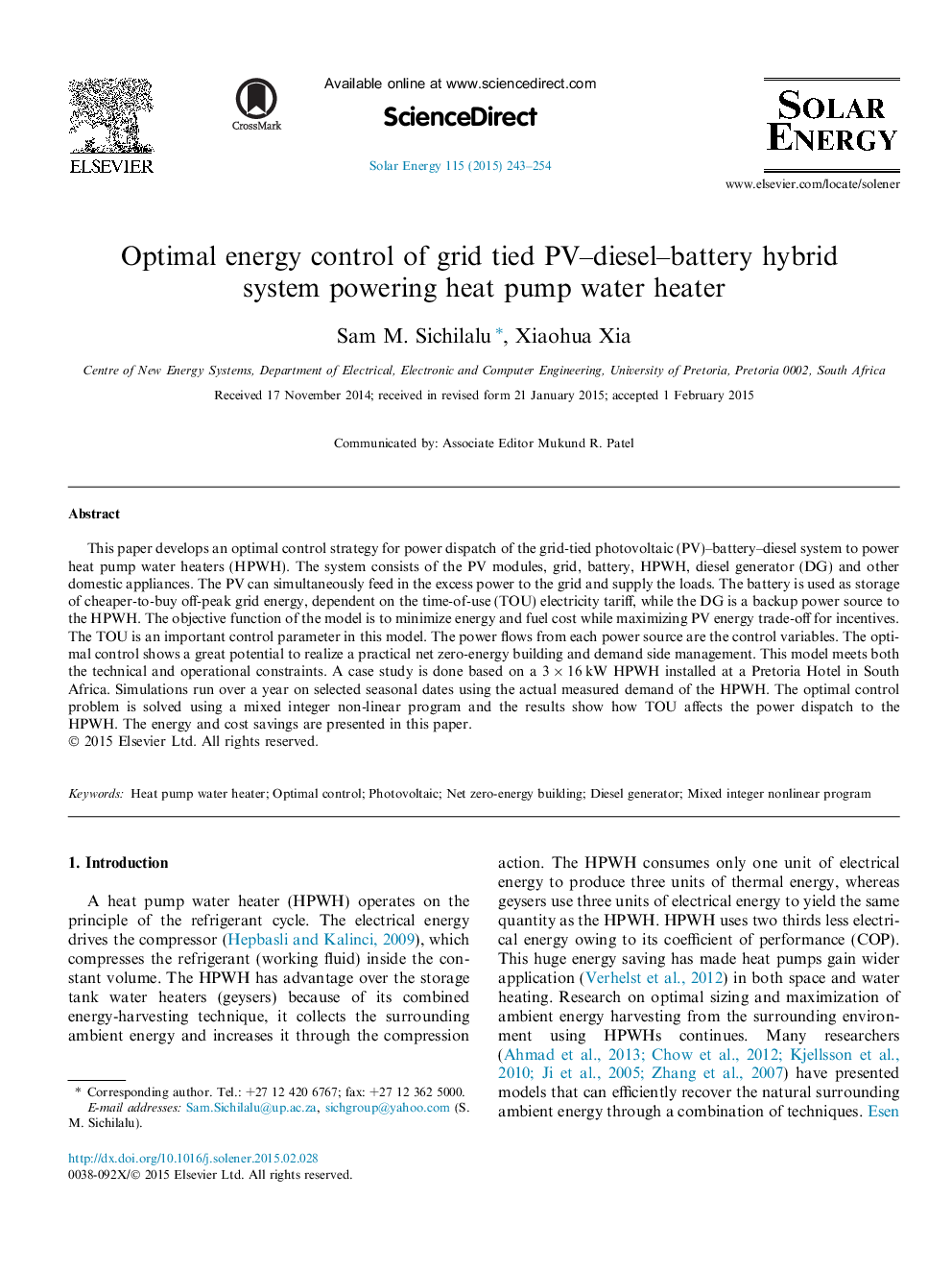| Article ID | Journal | Published Year | Pages | File Type |
|---|---|---|---|---|
| 7937954 | Solar Energy | 2015 | 12 Pages |
Abstract
This paper develops an optimal control strategy for power dispatch of the grid-tied photovoltaic (PV)-battery-diesel system to power heat pump water heaters (HPWH). The system consists of the PV modules, grid, battery, HPWH, diesel generator (DG) and other domestic appliances. The PV can simultaneously feed in the excess power to the grid and supply the loads. The battery is used as storage of cheaper-to-buy off-peak grid energy, dependent on the time-of-use (TOU) electricity tariff, while the DG is a backup power source to the HPWH. The objective function of the model is to minimize energy and fuel cost while maximizing PV energy trade-off for incentives. The TOU is an important control parameter in this model. The power flows from each power source are the control variables. The optimal control shows a great potential to realize a practical net zero-energy building and demand side management. This model meets both the technical and operational constraints. A case study is done based on a 3Â ÃÂ 16Â kW HPWH installed at a Pretoria Hotel in South Africa. Simulations run over a year on selected seasonal dates using the actual measured demand of the HPWH. The optimal control problem is solved using a mixed integer non-linear program and the results show how TOU affects the power dispatch to the HPWH. The energy and cost savings are presented in this paper.
Related Topics
Physical Sciences and Engineering
Energy
Renewable Energy, Sustainability and the Environment
Authors
Sam M. Sichilalu, Xiaohua Xia,
